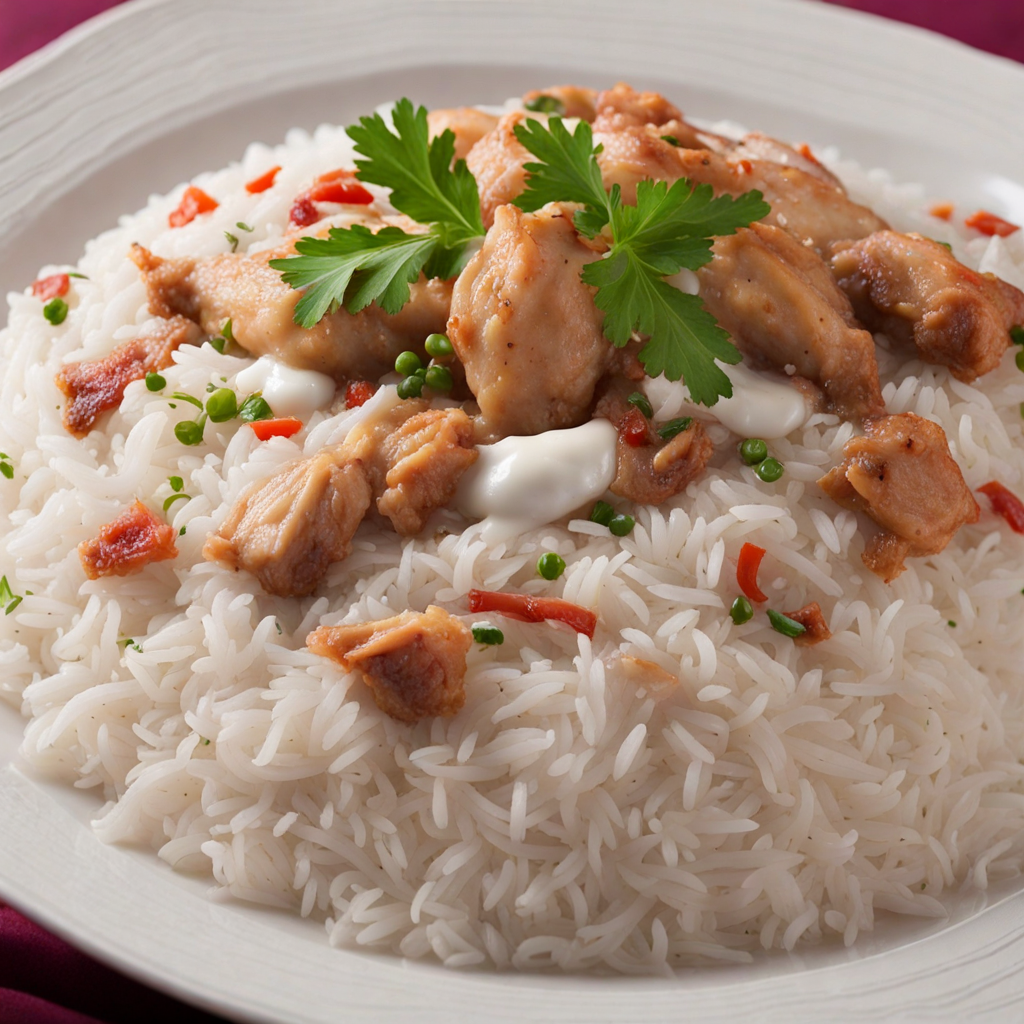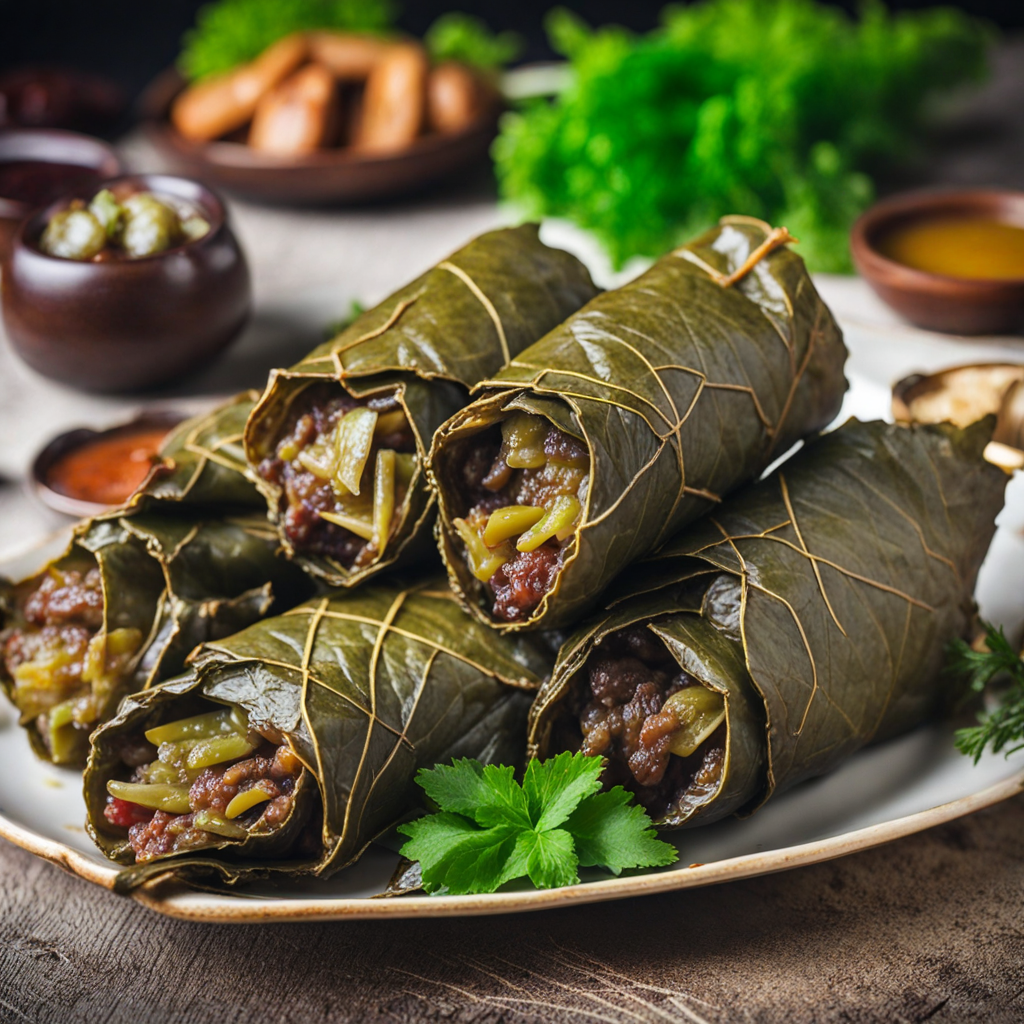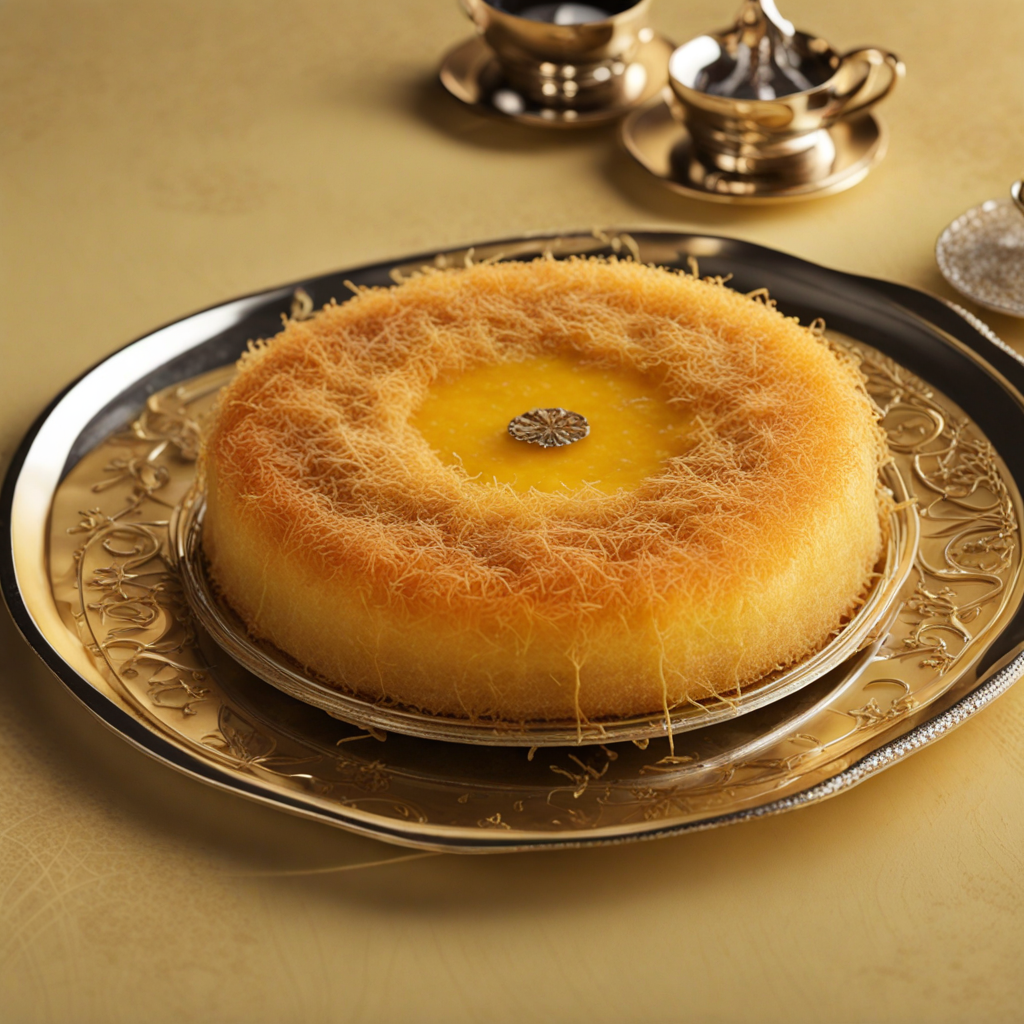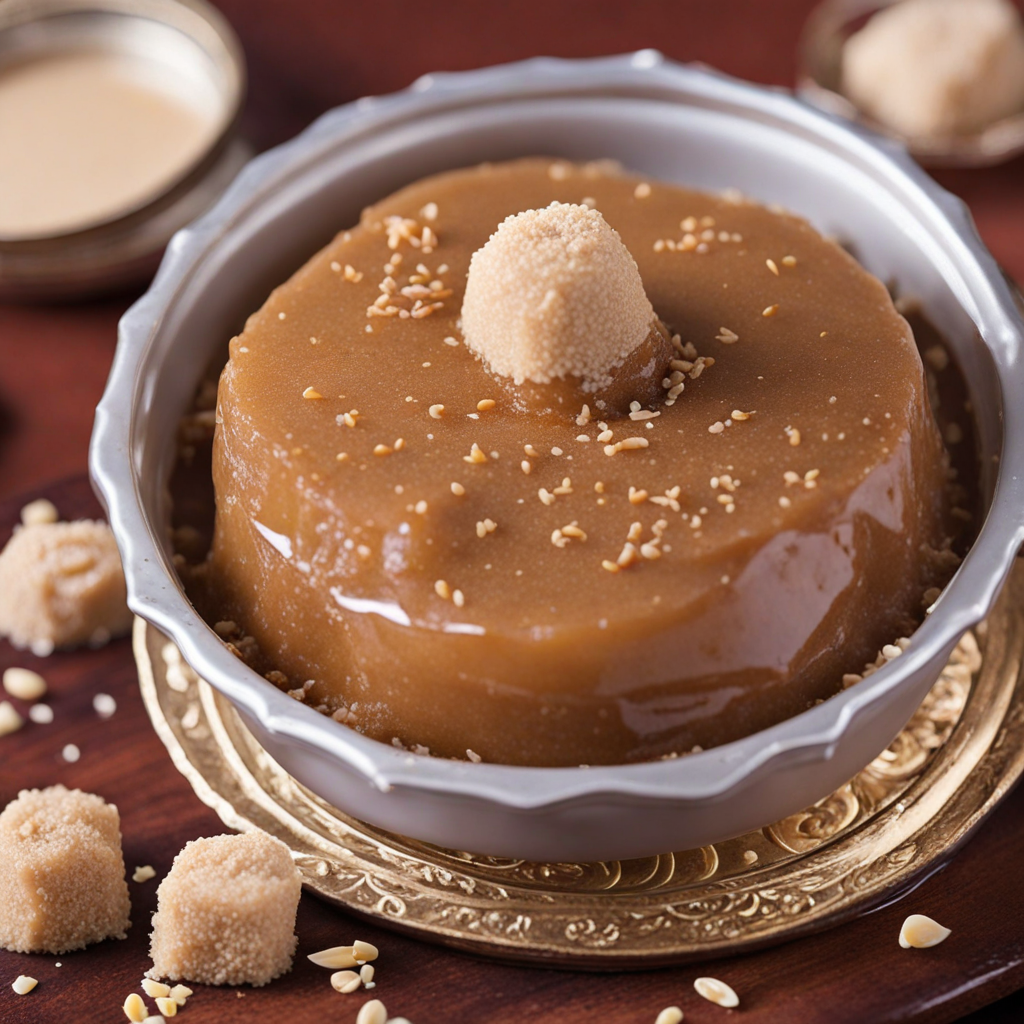Madrouba
Madrouba is a traditional Qatari dish that beautifully showcases the rich culinary heritage of the region. At its core, Madrouba consists of a hearty mixture of rice and chicken or lamb, slowly cooked to perfection in a fragrant broth. The ingredients are gently simmered until the rice absorbs the savory flavors of the meat and spices, creating a creamy, porridge-like consistency that is both comforting and satisfying. The dish is often seasoned with a blend of spices such as turmeric, coriander, and black pepper, which impart a warm, aromatic depth that elevates the overall flavor profile. What sets Madrouba apart is its unique texture and the way it brings together the simplicity of its ingredients with the complexity of its taste. The rice becomes tender and slightly mushy, while the meat falls apart easily, allowing each spoonful to deliver a harmonious blend of flavors. It is commonly garnished with fresh herbs and sometimes accompanied by pickles or yogurt, adding a refreshing contrast to the dish's richness. The preparation is not just a culinary process but also a cultural tradition, often enjoyed during family gatherings and special occasions. Madrouba serves as a testament to the Qatari way of life, where food is not just nourishment but a means of bringing people together. Each bite evokes a sense of warmth and camaraderie, making it an ideal meal for sharing. Whether enjoyed at a local eatery or made at home, Madrouba invites food lovers to explore the comforting flavors of Qatar, offering a unique taste experience that is both satisfying and memorable.
How It Became This Dish
## The Culinary Tale of مدروبة (Madrubah) in Qatar Origins and Historical Context Madrubah, a traditional dish from Qatar, holds a cherished place in the culinary landscape of the Gulf region. Its roots can be traced back to the nomadic Bedouin tribes that roamed the deserts and coastal areas of the Arabian Peninsula. The Bedouins, who relied on their herds and the bounty of the sea, developed a cuisine characterized by resourcefulness and simplicity, often utilizing what was immediately available to them. The name "Madrubah" is derived from the Arabic word "darb," which means to beat or pound, reflecting the dish's preparation method. Traditionally, it consists of a mixture of cooked wheat or rice that is pounded and often combined with dates, milk, and sometimes nuts. As with many traditional dishes, its ingredients vary according to availability, season, and local customs, but the core concept remains consistent—a hearty, nourishing dish that embodies the spirit of Qatari hospitality. Cultural Significance Madrubah is more than just a dish; it is a symbol of Qatari culture and heritage. In a society where hospitality is paramount, serving Madrubah to guests is a gesture of warmth and generosity. The dish is often prepared during significant events, including weddings, festivals, and communal gatherings, marking it as a central element in the social fabric of Qatari life. The preparation of Madrubah is often a communal activity, where family members and neighbors come together to create the dish. This collective effort reinforces social bonds and fosters a sense of community. The act of making Madrubah is a ritual in itself, often accompanied by storytelling, laughter, and the sharing of experiences, which enriches the cultural narrative surrounding the dish. Additionally, Madrubah reflects the connection between the Qatari people and their environment. The use of local ingredients and traditional methods signifies a deep respect for the land and its resources. This relationship is crucial in a region where food security has historically been a concern, particularly during periods of harsh climate and limited agricultural output. Development Over Time As Qatar has evolved, so too has Madrubah. The discovery of oil in the mid-20th century brought significant changes to the country’s economy, society, and culinary landscape. With increased wealth and urbanization, traditional practices began to shift. While Madrubah remained a beloved dish, its preparation and consumption underwent transformations. In urban settings, the dish started to be adapted to modern tastes and lifestyles. Ready-made ingredients became available, and cooking methods evolved with the introduction of new technologies. Despite these changes, many Qatari families strive to preserve the traditional methods of making Madrubah, often passing down recipes through generations. This blend of tradition and innovation highlights the resilience of Qatari culinary practices. Furthermore, the globalization of food culture has introduced new influences and flavors into the Qatari kitchen. While some families may experiment with ingredients, incorporating spices or modern cooking techniques, Madrubah retains its core identity as a traditional dish. The balance between honoring heritage and embracing change is a testament to the adaptability of Qatari cuisine. In recent years, there has been a renewed interest in traditional foods, spurred by a growing movement to celebrate and preserve cultural identities amid globalization. Food festivals, culinary workshops, and social media platforms have amplified the visibility of Madrubah and other traditional dishes, encouraging younger generations to reconnect with their culinary heritage. Chefs and home cooks alike are now experimenting with Madrubah, infusing it with contemporary twists while respecting its roots. Modern Interpretations and Culinary Innovations Today, Madrubah is often showcased in various forms, from traditional family gatherings to high-end restaurant menus. Chefs are reimagining the dish, pairing it with modern ingredients and techniques while still maintaining the essence of its traditional roots. Some may serve it with a side of saffron-infused chicken or a drizzle of date syrup, elevating the dish's presentation and flavor profile. The Qatari culinary scene is also becoming more diverse, with influences from South Asian, Persian, and Mediterranean cuisines. This cultural exchange encourages creative interpretations of Madrubah, allowing it to evolve while remaining a staple of Qatari identity. Food enthusiasts and tourists are increasingly drawn to traditional dishes like Madrubah, seeking authentic experiences that reflect the region's rich heritage. Madrubah in the Future As Qatar continues to grow and modernize, the future of Madrubah appears promising. The dish is not only a culinary delight but also a narrative of resilience, community, and identity. Efforts to document and share traditional recipes are vital in ensuring that the next generation appreciates the significance of their culinary heritage. In a world where fast food and convenience often overshadow traditional cooking, Madrubah stands as a reminder of the importance of cultural preservation. Initiatives aimed at teaching young people about their culinary history, including cooking classes and community events, are essential in keeping the spirit of Madrubah alive. Moreover, as Qatar prepares to host international events and engage with global audiences, there is an opportunity to showcase Madrubah on the world stage. By highlighting this dish, Qatar can share its cultural stories and culinary traditions, fostering a deeper understanding of its heritage. Conclusion Madrubah is more than just a dish; it is a culinary emblem of Qatar's history, culture, and community spirit. Its journey from the deserts of the Arabian Peninsula to contemporary kitchens reflects the resilience of tradition in a rapidly changing world. As Qatar navigates the complexities of modernity, dishes like Madrubah remind its people of their roots, celebrating the rich tapestry of flavors, stories, and connections that define their identity. Whether enjoyed in a bustling city or a quiet desert camp, Madrubah will continue to nourish both the body and the soul for generations to come.
You may like
Discover local flavors from Qatar







